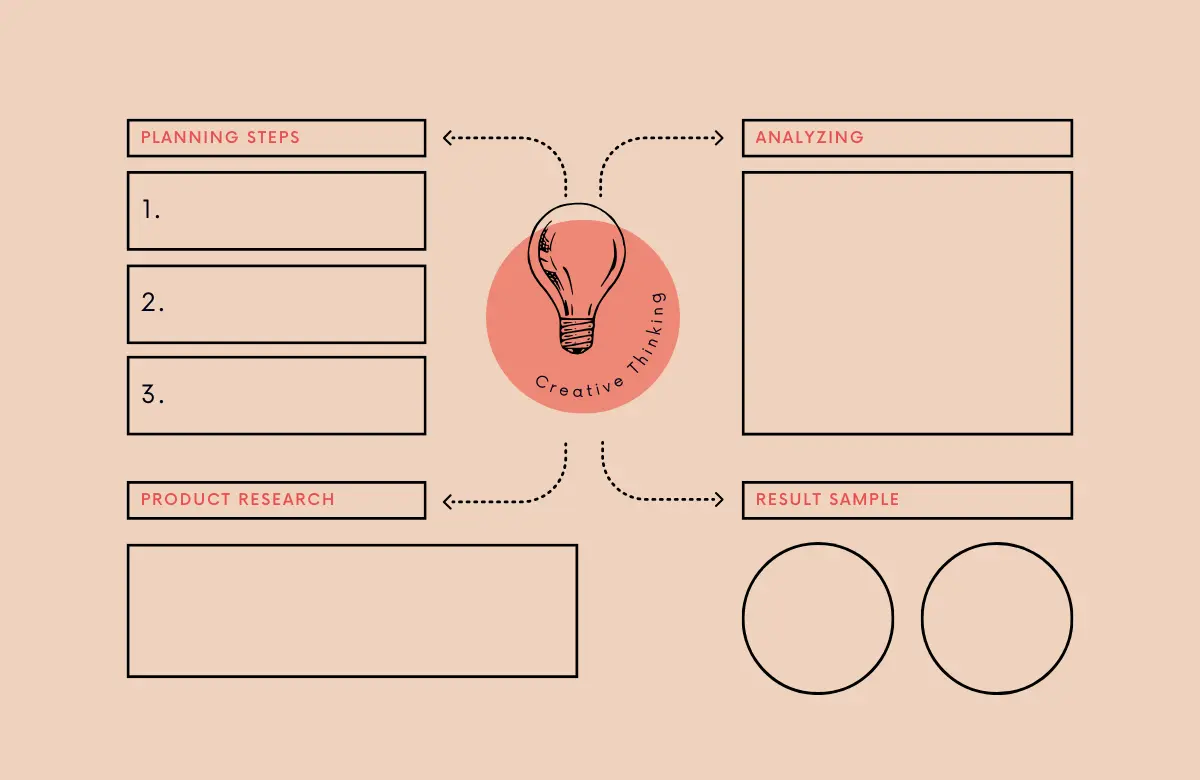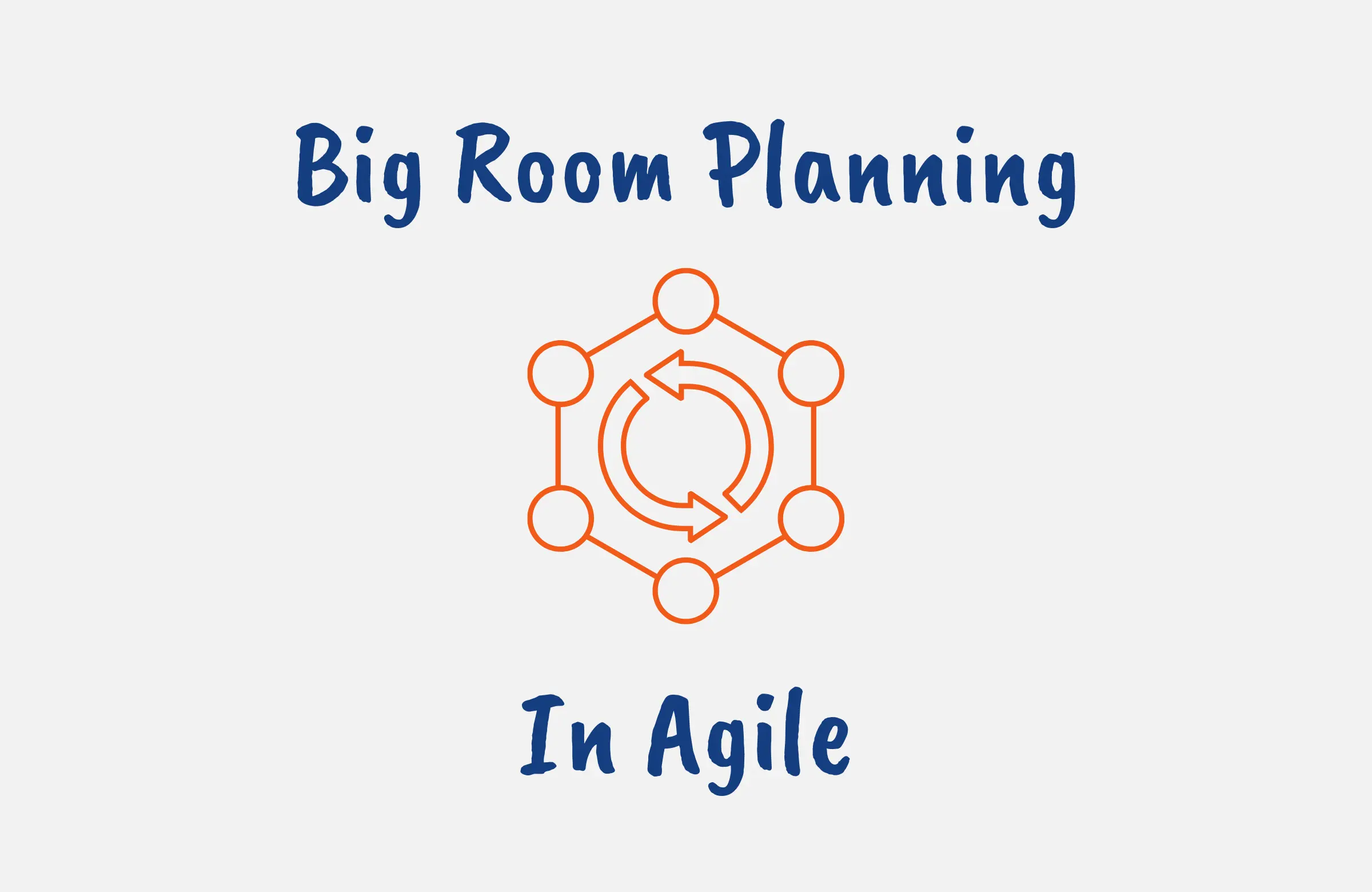Proper planning and strategy are vital for any project’s success and as the project complexity increases, planning becomes more challenging.
While the Agile methodology is not an advocate of detailed planning like its waterfall counterpath, some level of planning is still essential for streamlining processes and avoiding failure. That is where Agile Big Room Planning comes in.
Big Room Planning is a capacity planning technique for large Agile projects that brings cross-functional teams together to collaboratively plan and align on goals, priorities, and workflows.
By gathering around a program board, teams can visualize dependencies, capacity, and workloads needed to deliver. This transparency and synchronization builds collective ownership and shared understanding.
In this article, we’ll explore what Big Room Planning is all about, how to run productive sessions, how it helps to transform teamwork and drive continuous delivery, as well as the role of the Scrum Master in Big Room Planning.
What is Big Room Planning in Agile?
Big Room Planning is a time-boxed, collaborative planning session that brings together multiple cross-functional Agile teams to create a shared understanding of the goals, priorities, and dependencies for an upcoming timeframe.
It’s essential for scaling Agile frameworks like SAFe, enabling smooth collaboration and alignment.
In Big Room Planning, representatives from different teams and roles including developers, Product Owners, Scrum Masters, and key stakeholders come together in a common physical or virtual space.
The event typically happens at regular intervals aligned with the Program Increment (PI) cadence and is focused on breaking down larger initiatives into implementable stories and discussing cross-team dependencies.
As a participant, you will collaborate to identify risks and devise mitigation strategies. The session results in greater transparency into the roadmap and improved coordination across teams.
With effective facilitation, the session sets the stage for continuous delivery of value through enhanced alignment and the ability to course-correct quickly based on emerging feedback.

Purpose of Big Room Planning
The primary purpose of Big Room Planning is to align teams and create a shared understanding of the upcoming goals and priorities.
Here are some key reasons why organizations conduct Big Room Planning:
Acceleration of Decision-making
By bringing all relevant stakeholders together, decisions can be made quickly with all perspectives represented which avoids delays from siloed planning.
Identification of Dependencies and Risks
With improved transparency and communication, teams can proactively identify cross-team dependencies and potential risks early enabling mitigation plans to be formed.
Improved coordination and collaboration
Big Room Planning fosters better collaboration across teams. With knowledge sharing and coordination, teams can work together more efficiently on interdependent initiatives.
Continuous improvement
The regular cadence of Big Room Planning meetings enables teams to continuously inspect and adapt their progress based on feedback and changing priorities.
Enhanced engagement
Participating in Big Room Planning makes team members feel more connected to the broader mission and purpose which leads to greater engagement and motivation.

Who Attends Big Room Planning?
The key participants in a Big Room Planning session include:
- Agile Team Members: Developers, testers, designers, etc. from each Agile team attend to break down initiatives into stories and tasks.
- Product Owners: They provide guidance on business priorities and acceptance criteria for stories.
- Scrum Masters: They advise on dependency management, capacity planning, and impediment removal.
- Stakeholders: Key business stakeholders, end users, and customers may attend to provide insights into requirements.
- Release Train Engineers: They maintain alignment with the overall roadmap and guide the teams.
- Leadership: Leaders may participate to communicate company goals, support decision-making, and remove barriers.
- Facilitators: Skilled Agile team facilitators ensure effective collaboration and time management during the event.
How to Use Big Room Planning
Big Room Planning is a valuable technique to align Agile teams and enable continuous delivery.
Here are some tips on using it effectively:
Define the Cadence
Determine an appropriate regular interval for conducting Big Room Planning based on release cycles. Common cadences are quarterly or every 1-3 months.
Right-size Participation
Include representatives from each team, but keep the group small enough for productive collaboration. Avoid including the entire team membership.
Prepare Participants
Provide objectives, agenda, and any pre-reads in advance so attendees come prepared. Gather the required data and inputs beforehand.
Dedicate Sufficient Time
Allocate enough time (typically 1-2 full days) for breaking down epics, mapping out plans, discussions, and the retrospective.
Leverage Visuals
Use boards, charts, timelines, etc. to visualize information and discuss as a group. Then capture dependencies and key action items.
Follow Through
Summarize the outcomes and ensure there is a post-session follow-through on action items through regular check-ins.

Advantages of Big Room Planning in Agile
Big Room Planning offers several key advantages for Agile teams and organizations including:
Improved Alignment
By facilitating collaboration across teams, Big Room Planning ensures all participants gain a shared understanding of the goals and priorities for the PI.
This alignment on the “big picture” helps prevent mismatched priorities or redundant efforts.
Enhanced Transparency
With representatives from each team coming together, there is improved transparency in cross-team initiatives and dependencies. This visibility enables the identification of potential risks and bottlenecks early.
Better Coordination
The cross-functional participation and planning process enables more effective coordination across teams. Teams can optimize hand-offs, adjust based on capacity changes, and deliver seamlessly on interdependent work.
Accelerated Decision-making
Having all relevant stakeholders participate enables faster and more aligned decision-making ensuring that issues get resolved quickly without waiting for siloed decisions.
Continuous Improvement
The regular cadence of Big Room Planning allows teams to continuously inspect and adapt plans based on changing priorities. They can then leverage the feedback to improve throughput.
Increased Engagement
Participants feel more connected to the big picture purpose and are engaged as contributors to the PI planning process which leads to greater motivation.
Challenges when Using Big Room Planning
While beneficial, some common challenges can arise in Big Room Planning. These include:
Insufficient Preparation
Without clear goals, data-driven insights, and time allocated for planning, the session will lack context and focus.
Poor Facilitation
Without adept facilitation, discussions may get side-tracked or unproductive and some voices may get left out.
Lack of Engagement
Participants may not actively contribute if they don’t see the value. Therefore, make sure teams understand the “why”.
Scope Creep
Discussions may get dragged into unnecessary details or tangent topics. That’s why it is important to timebox discussions.
Poor Follow-through
If action items and outcomes aren’t tracked after the session, then momentum will be lost. One way to mitigate this is to establish accountability.
Freeloading members
Some members may not meaningfully contribute if there is no individual accountability. Consider shared commitments to handle this challenge.
Ineffective Retrospectives
If retrospectives don’t drive improvements, poor practices will persist. So prioritize the vital few action items.
Big Room Planning Agenda
Having an effective Big Room Planning agenda ensures you achieve the core planning activities within the allocated timebox, as well as active participation and collaboration from all attendees.
Here is a sample agenda that you can as per your specific PI planning needs:
Introductions
Have all participants introduce themselves and their roles. You may consider including an icebreaker activity.
Frame the Event
Communicate the objectives, agenda, and desired outcomes for the planning session, and align on the duration of the PI.
Present Vision and Data
Share the product vision, metrics, and customer feedback to frame upcoming priorities and initiatives.
Breakdown Epics
Guide teams to break initiatives and epics into smaller stories and tasks, then have them estimate efforts.
Map Deliverables
Teams map out stories and tasks to Sprints based on priority, effort, and dependencies, then identify milestones.
Discuss Dependencies and Risks
Highlight cross-team dependencies and hand-offs needed, and identify potential delivery risks and mitigations.
Confirm Capacity
Evaluate capacity across teams and make appropriate adjustments if needed.
Retrospective
Conclude with a retrospective and capture feedback on the event and focus areas.

Big Room Planning Retrospective
Conducting a retrospective after Big Room Planning allows teams to inspect the event and identify improvements for future PI planning sessions.
Start by asking participants:
- What went well during the planning event?
- What could be improved?
- What actionable ideas do you suggest?
Capture the feedback visibly, like on a whiteboard or shared document. Look for trends and insights in the feedback.
Some areas to gather feedback may include:
- The physical setup and logistics
- Quality of participation and engagement
- Collaboration within and across teams
- Time management
- Leadership involvement
- Effectiveness of the facilitation
- Achievement of the desired outcomes
Finally, have participants vote on the top 2-3 action items to prioritize for the next planning cycle and make sure to track these actions to ensure they are addressed.

Scrum Master Role in Big Room Planning
The Scrum Master plays an important facilitative role in ensuring a productive Big Room Planning session.
Key responsibilities include:
- Working with the Product Owner to prepare the plan for the upcoming Program Increment (PI) based on the product roadmap.
- Helping guide their team during breakout sessions to effectively break down epics and features into implementable stories and tasks.
- Facilitating estimation exercises like planning poker to determine effort and completion timelines.
- Recording key details like acceptance criteria, priorities, and assignments for each story.
- Guiding the team on mapping stories to Sprints based on priority, dependencies, and team capacity.
- Representing the team in cross-functional discussions to highlight dependencies and coordinate on inter-team deliverables.
- Identifying potential delivery risks related to the team’s stories and helping devise mitigation strategies.
- Contributing insights during the big room retrospective on ways to improve collaboration and productivity.
- Following up on action items that emerge from the retrospective.

Tips for Facilitating Big Room Planning
Effective facilitation will lead to an inclusive, engaging, and productive planning experience for all participants, and cross-team alignment on priorities which is key to a productive Big Room Planning session.
Here are some tips to facilitate an effective session:
Set clear expectations
Communicate the objectives, agenda, and desired outcomes to all participants prior to the event so everyone is aligned.
Right-size Breakout Groups
When splitting participants into breakout groups, ensure the groups are not too large. Groups of 5-8 people facilitate optimal participation and collaboration.
Timebox Discussions
Use timers to keep breakout and sharing sessions timed and on track to prevent losing focus or getting bogged down in details.
Leverage Visuals
Use physical or virtual whiteboards, charts, and boards to visualize information like epics, stories, timelines, and risks to aid discussion and shared understanding.
Promote Active Participation
Encourage broad participation through activities like round robins to get all voices and perspectives included to prevent side conversations and multitasking.
Manage Conflicts
Where disagreements arise on priorities or approaches, facilitate open dialogue and quick consensus-building. Identify compromises and action items.
Park Non-critical Issues
Capture non-critical items raised in a “parking lot” to revisit later. Keep the focus on critical path items during the sessions.
Summarize Agreements
At milestones, summarize key decisions, commitments, and action items to confirm shared understanding across all participants.
End on Time
Respect participants’ time by adhering to the agenda timing. Wrap up outstanding items and end promptly.

Big Room Planning Template
To facilitate effective Big Room Planning, it’s crucial to have a well-structured template that can guide the teams through the process.
Below is a template that can be adapted for your specific context and needs:
Pre-Planning
1. Objectives Setting
- Define the business and technical objectives for the PI.
- Articulate the vision and the roadmap for the upcoming increment.
2. Logistics Preparation
- Schedule the date, time, and location (physical or virtual) for the Big Room Planning event.
- Ensure all necessary tools and materials are ready, such as whiteboards, sticky notes, projectors, and collaboration software.
Opening Session
1. Introduction
- Welcome participants and outline the agenda.
- Reinforce the goals and the importance of the event.
2. Business Context
- Present the market changes, customer needs, and feedback since the last PI.
- Highlight any organizational changes or updates that may impact the planning process.
3. Product/Solution Vision
- Review and update the product or solution vision as necessary.
- Present the roadmap and the features expected to be delivered in the upcoming PI.
4. Architecture Vision and Development Practices
- Review any architectural changes, updates, or guidelines that need to be considered during the PI.
- Discuss development practices and standards to be adhered to.
Team Breakouts
1. Draft Iteration Plans
- Teams break out to create draft plans for their iterations within the PI, taking into account feature priorities, dependencies, and capacity.
- Draft plans should include user stories, tasks, acceptance criteria, and definition of done.
2. Identify Risks and Dependencies
- Teams identify any risks or dependencies associated with their draft plans.
- Dependencies between teams should be explicitly noted and visualized.
3. Draft Program Board
- Create the initial draft of the Program Board to visualize feature delivery, milestones, and dependencies across teams and iterations.
Management Review and Problem-solving
1. Review Draft Plans
- Management reviews draft plans to ensure alignment with objectives and to identify any potential issues.
- Teams receive feedback and collaborate on resolving identified issues.
2. Risk Management
- Teams and management work together to identify, categorize, and plan for risks.
- Risks should be documented and plans put in place to address them.
Final Plan Review
1. Finalize Iteration Plans
- Teams update their iteration plans based on feedback and problem-solving sessions.
- Final plans should reflect a commitment from the teams that is realistic and achievable.
2. Finalize Program Board
- Update the Program Board with final feature delivery dates, milestones, and dependencies.
3. Retrospective and Process Improvement
- Conduct a retrospective on the Big Room Planning process to gather learnings and improvement actions for the next PI.
Closing Session
1. PI Objectives
- Each team presents its PI objectives and how they align with the overall ART objectives.
- PI objectives should be SMART (Specific, Measurable, Achievable, Relevant, and Time-bound).
2. Confidence Vote
- Conduct a confidence vote to ensure that all teams are confident in their plans and commitments.
- Address any concerns that arise from the confidence vote to ensure that there is a shared commitment to the PI objectives.
3. Moving Forward
- Outline the immediate next steps following the Big Room Planning event.
- Ensure that everyone is clear on their roles, responsibilities, and timelines.
Follow-Up
1. Communicate the Plan
- Share the outcomes of the Big Room Planning with all stakeholders, including the finalized Program Board and PI objectives.
- Ensure transparency and visibility into the planning outcomes.
2. Enable Execution
- Ensure that teams have access to the required resources and support structures to execute the plan effectively.
- Schedule regular synchronization meetings (e.g. Scrum of Scrums, ART Sync) to track progress and address impediments.

Big Room Planning vs PI Planning
Big Room Planning and PI Planning are similar collaborative planning techniques used by Agile teams and are often mistaken for each other.
While the two have overlapping purposes, there are some key differences as highlighted below:
Event Horizon
Big Room Planning is focused on near-term planning for the upcoming 1-3 months while PI planning has a longer planning horizon of around 12 months comprised of multiple smaller Program Increments.
Attendance
Big Room Planning involves representatives from different teams while PI planning includes the full team membership.
Level of Detail
In Big Room Planning, epics are broken into features or user stories for the current PI. On the other hand, PI planning may cover higher-level planning across multiple PIs.
Frequency
Big Room Planning is conducted at regular intervals of 1-3 months while PI planning is typically done quarterly. The shorter Big Room Planning cadence allows faster adaptation.
Outputs
Big Room Planning produces commitment-based plans and priorities for the PI. PI planning on the other hand creates a roadmap and release plan spanning multiple PIs.
Duration
Big Room Planning is usually 1-2 days while PI planning can be longer at 2-5 days to accommodate broader planning.
Conclusion
As teams embrace Agile ways of working, Big Room Planning is an essential event that fosters alignment, collaboration, and continuous improvement.
By bringing cross-functional teams together to transparently plan in a participative way, organizations can accelerate outcomes and respond faster to change.
With an adept facilitator and representatives from key roles, big room planning sessions enable knowledge sharing and coordination critical for scaling Agile.
Make this regular planning activity action-oriented and outcomes-driven, and you will unlock greater productivity, innovation, and business value.
FAQs
Is Big Room Planning the Same as PI Planning?
No, Big Room Planning and PI planning are distinct techniques. While both collaborative planning rituals for Agile teams, Big Room Planning has a shorter horizon focused on near-term execution planning.
PI planning involves higher-level roadmapping spanning multiple increments over a longer time horizon.
How Often is Big Room Planning Organized?
Big Room Planning is typically conducted at regular intervals aligned with the team’s cadence for delivering value. Common cadences are quarterly or every 1-3 months.
The frequency allows for near-term priority setting and adaptation while not being too disruptive. Organizations tailor the cadence based on release cycles and the need for alignment.
Does Big Room Planning Work?
Yes, Big Room Planning is an effective technique when applied thoughtfully. By facilitating collaboration and transparency between cross-functional teams, organizations see improved alignment, coordination, and productivity.
Regular Big Room Planning meetings help teams continuously inspect and adapt to changing priorities.





